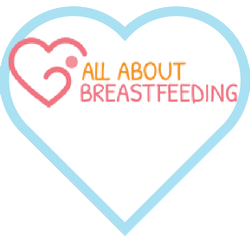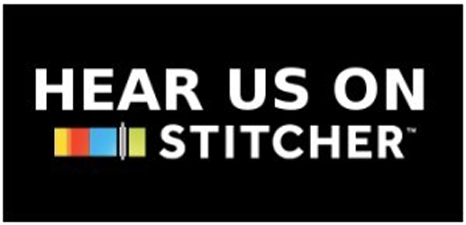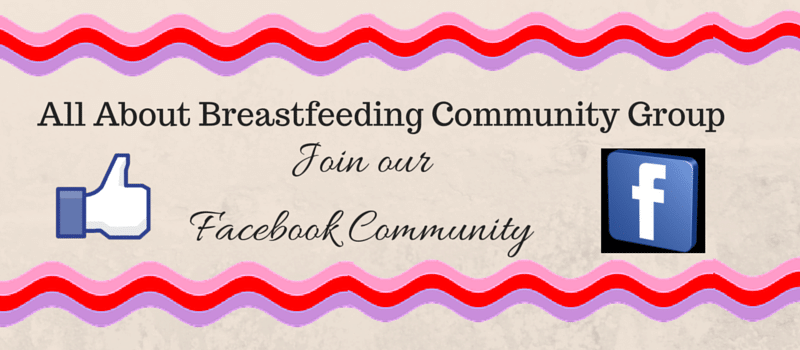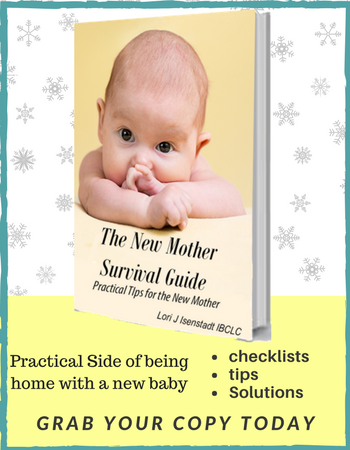Her Story.
Background History:
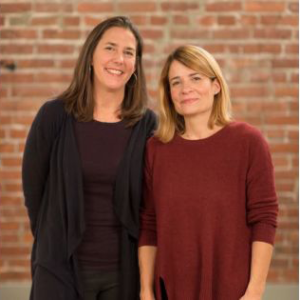 Mamava is a business dedicated to transforming the culture of breastfeeding. On todays show, the founders, Christine Dodson and Sascha Mayer will be talking about there first product, which is a freestanding lactation suite. It provides privacy, cleanliness, and all you need to use a breast pump or nurse an infant.
Mamava is a business dedicated to transforming the culture of breastfeeding. On todays show, the founders, Christine Dodson and Sascha Mayer will be talking about there first product, which is a freestanding lactation suite. It provides privacy, cleanliness, and all you need to use a breast pump or nurse an infant.
The idea for mamava was born having pumped at trade shows, airports, corporate retreats, baseball games, and even the back seat of a male client’s car, the owners of mamava decided enough was enough. They were motivated to design Mamava because of their personal experiences as working, nursing moms, and by all the friends and colleagues and the thousands of women who have shared their experiences and frustrations with us.
The first time I saw Mamava
.
The first time I saw one was when I traveled to San Antonio, TX and I saw one in the airport. Interestingly enough I was on my way home for a lactation conference where I had just given a presentation about normalizing breastfeeding. Since my kids are well past their breastfeeding days and I will never have a reason to legitimately be using the suite, I had my husband take a picture of me in front of it.
On their website they have a page called: Mamavafesto.
I wanted to read the last 2 sentences to you because they really resonated with me. It says:
We believe that breastfeeding is a beautiful, healthful, natural function of motherhood that no mother should be denied based on cultural, social, economic, or other circumstances.
We believe that all mamas deserve a private, clean, and comfortable place to use a breast pump or breastfeed – anywhere, anytime-
Tell us what pumping was like for each of you:
Sascha – There was a lot of stress around the difference between breastfeeding and pumping. I had my own office. I pumped in my office and everyone knew it. The bigger issue was when I went out of the office, needed to take breaks, having to pump in places like airports and conference centers. There was often no place to pump and the bathroom was usually the only place to pump. We are told to breastfeed our babies, but when it comes to pumping, you are on your own.
Christine –
Tells us that she was asked to go to a client meeting. before she actually returned from maternity leave. This was 19 years ago in 1999. I was pretty good at breastfeeding, but not necessarily pumping. I was asked to go to a client meeting. I was not prepared. I went with my pump, but unsure about pumping and embarrassed about this m machine she was carrying around. She was shy about asking… ending up leaking on her silk blouse in a meeting in a room full of men. This story represents the lack of conversation of moms going back to work, empathy with employers about what pumping moms need when they return to work, and what they need for pumping. I know there are plenty of woman who just don’t even know how to talk about this with there employers, much less talk about a place to pump. My personal mission is to make it more normal and more accepted.
Sascha – You feel isolated. Especially if you are alone in your group of friends. You are exposed. You are away from your top priority, which is your baby. You are attached to this apparatus, this plastic pump.
Christine – In Vermont, I have access to Lactation Consultants in the hospital. The insurance companies were great. All that part was amazing, but when it came to pumping, noone talked about this. Now it has changed, but there was definitely a gap in this during the late 90s.
When you were pregnant, – what was it that you thought it would be like when you returned to work and need to pump.
Christine-
While I was pregnant, I thought I would just stop breastfeeding. I figured I would do it for 3 months and then I would stop breastfeeding when I returned to work. I had so little confidence that I would have the time and the support to keep it up. Once I tried pumping at home, it was even more a realization that this was not easy, it was time consuming and there was all this equipment. I introduced formula earlier than I would have. I was different with my next 2 babies and breastfed longer.
I was the first mom in my company to have a baby and returned to work. My company had no clue what it was like.
I was so sad about what happened with my first baby, that I was like, No, this is not going to happen again. Now there were other moms at work who were pumping for their babies.
The second time around I had much more confidence. It was a combination of things that helped with this. I was in a better place in my career. The company culture was different and this made pumping at work much easier.
Sascha:
I read books. I was committed to this. My child really preferred the breast and basically reversed his schedule. I would pump during the day and he would nurse all night. He would take little sips just to get him through and would make up for it at night. I would like to tell new moms that it feels like forever, but it really does go by quickly. I knew to start him on a nipple before you go back to work and he just never preferred any nipple. I tried many nipples, changed the temperature, but he just refused the bottle. My second baby, my daughter, took to the bottle easily.
We call this reverse cycling. Babies take very little or nothing when separated from their moms and then make up for it when they are together.
What was the idea for the Mamava –
Wikipedia says:
Kantor’s story on the class gap in breastfeeding[19] inspired the creation of the first free-standing lactation stations, now installed in hundreds of airports, stadiums and other workplaces around the country.
Sascha:
It was an idea that was simmering for a while. First there were shared experiences with co-workers. Then there was the activist side of me who responded to the cover of the New York Times. It was Labor Day of 2006. The article was about the fact that there was this 2-tiered class system happening with breastfeeding woman. There were the woman who had autonomy in their job. They could have break time and lactation rooms and pumps provided by their employers, Then there were other moms who didn’t have autonomy… moms working in factories or had jobs that required them to stand in check out lines. They did not have the ease and ability to pump at work.
Well, I remember sitting at my parents house, nursing my baby and here was my light bulb moment. Mama Latte was our original thinking. We are friendly with Jodi, this journalist and sh e is blown away that it was her article that started this. She now has a young baby and she gets excited when she sees the suites in airports and other places
Coming up with the actual suite –
Christine: We both worked at a design studio. The owners did an exercise and asked: How can design solve cultural problems. The idea was there, but this exercise helped to expand on this idea. We asked ourselves: Is it a chair? The ideas evolved from there and asking a lot of our peers were helpful. An industrial designer took our brief and came back with the first drawings and the original design has not changed very much from that point.
Sascha: The fact that this is loud and proud and easily seen and we have a cool logo – This is exactly what we wanted.
Did you Survey people about your idea?
We surveyed and did focus groups where we brought moms in to work with us on features and what they would expect for a space/place like this.
We needed to have a space with both the facility and the mom in mind.
We didn’t want it to be earth mother with flowers and babies, it was more business like atmosphere but still comfortable and relaxed about it. This is what drove the inside aesthetics. We wanted it to be a nice and relaxing palace for moms to pump, but not to comfy. We wanted it to be a place where moms were going to go do their business of pumping and then leave it so it can be used by another mom.
How has Mamava evolve?
We talked about how they secured the very first place for the Mamava to be placed. When the business really took off and how they went about leaving their day jobs to work Full Time at Mamava. They now have a Mamava app that one can use to tell where Mamavas are located, as well as other lactation rooms across the country. In 2017,they integrated a blue tooth module that is connected to a smart lock on the pods. Their customers were wanting to manage access to the pods and wanted to know how much use they are getting. This enables them to give moms access thorough the app. It also measures the time she is in there and when. For example, this unit at XYZ airport is getting a lot of use. Perhaps we need another one or perhaps we need to increase the maintenance on this unit. They are working hard to collaborate or partner with other brands as far as sharing information and education on breastfeeding.
On the Mamava website they have resources available so that individual moms can put in requests for units in their local area. For instance, moms have petitioned for lactation space in stadiums.
There currently are 435 suites that have been placed in the last 2 years.
Lessons learned so far:
They were not prepared for getting various calls to respond to. This is not something they were prepared for initially, however, have become much better.
This has been a wonderful interview and I enjoyed having you both on the show.
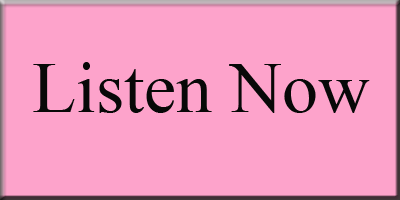
listen Now
Lori J. Isenstadt, IBCLC
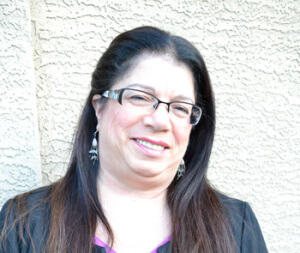 Lori Jill Isenstadt, IBCLC is a huge breastfeeding supporter. She has spent much of her adult life working in the maternal health field. Once she became turned on to birth and became a childbirth educator, there was no stopping her love of working with families during their childbearing years. Lori became a Birth doula and a Postpartum doula and soon became a lactation consultant. She has been helping moms and babies with breastfeeding for over 25 years. Lori founded her private practice, All About Breastfeeding where she meets with moms one on one to help solve their breastfeeding challenges. She is an international speaker, book author and the host of the popular itunes podcast, All About Breastfeeding, the place where the girls hang out. You can reach Lori by email at: aabreastfeeding@hotmail.com or contact her via her website: allaboutbreastfeeding.biz/contact
Lori Jill Isenstadt, IBCLC is a huge breastfeeding supporter. She has spent much of her adult life working in the maternal health field. Once she became turned on to birth and became a childbirth educator, there was no stopping her love of working with families during their childbearing years. Lori became a Birth doula and a Postpartum doula and soon became a lactation consultant. She has been helping moms and babies with breastfeeding for over 25 years. Lori founded her private practice, All About Breastfeeding where she meets with moms one on one to help solve their breastfeeding challenges. She is an international speaker, book author and the host of the popular itunes podcast, All About Breastfeeding, the place where the girls hang out. You can reach Lori by email at: aabreastfeeding@hotmail.com or contact her via her website: allaboutbreastfeeding.biz/contact
Submit a comment
your email address will not be published
